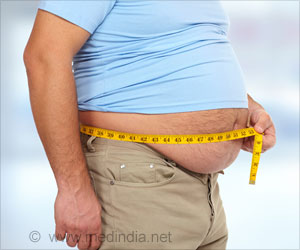Highlights
- Teenage obesity is a global epidemic that is known to increase the risk for cardiovascular disease and diabetes. However, researchers have now found that teenage obesity leads to poor bone health.
- Adolescents who are obese show lower level of growth hormone
- High visceral obesity and low muscle mass is associated with poor bone health
- One in 3 adults are considered to be obese
- One in 20 adults are considered to have extreme obesity
- More than one in 6 children or adolescents are found to be obese,
Obesity is fast becoming an epidemic with more number of people becoming obese and at a younger age. The increased amount of stored fat raises fat deposition in important arteries with greater risk of cardiovascular disease. Obesity is also found to increase the risk for diabetes. The high prevalence of obesity necessitates a thorough understanding of its negative effects, which will aid in leading a healthier lifestyle to safeguard against its negative effects.
Obesity and Bone Loss
Dr. Miriam A. Bredella, lead author of the study is an associate professor of Radiology at Harvard Medical School in Boston and a radiologist at Massachusetts General Hospital, "While obesity was previously believed to be protective of bone health, recent studies have shown a higher incidence of forearm fractures in obese youth."
Dr Bredella and colleagues studied the effect of obesity on bone mass as bone mass is essential to maintain structural strength required for growth as well as for support. Twenty three obese individuals were recruited for the study with an average age of 17 years and a BMI of 44 kg/m2.
The researchers conducted the following imaging techniques to study appropriate bone structure: A particular type of computer tomography called 3D HR-pQCT was carried out to study
- Bone mineral density
- Bone architecture
Dual-energy x-ray absorptiometry (DXA) was carried out to study
- Lean mass
- Visceral mass which is the fat that surrounds the organs
Harmful Effects of Visceral Obesity on Bone Health
- Visceral obesity leads to an increase in visceral fat, which results in the secretion of certain substances that lead to chronic inflammation.
- The chronic inflammation increases the formation of osteoclasts that were responsible for resorption of bone.
- Vitamin D, an important vitamin required for good bone health, is dissolved by fat
- Growth hormone was lower among people with visceral obesity
- There was a positive association between BMI and cortical thickness and area
- A positive association existed between visceral fat mass and cortical porosity
- There was a positive association between lean mass and trabecular volume, density and integrity.
- High visceral fat and low muscle mass increased the risk for poor bone mass
Dr. Bredella gave her tip for better bone health, "The best way to prevent bone loss is a healthy diet that contains adequate amounts of calcium and vitamin D, along with sufficient exercise, as we have shown in our study that muscle mass is good for bone health."
The rising obesity numbers can be attributed to poor eating habits where the amount of energy consumed far exceeds the energy required. The current study creates a sense of urgency about following a healthy diet that would lower risk for obesity and protect bone health.
Adolescence is a time during which there is maximum bone development, which includes the height attained and the structural growth. An obese adolescent could lose out on the growth spurt that occurs during this stage, necessitating immediate attention to excess weight gain.
References:
- Overweight and Obesity Statistics - (http://www.niddk.nih.gov/health-information/health-statistics/Pages/overweight-obesity-statistics.aspx)















